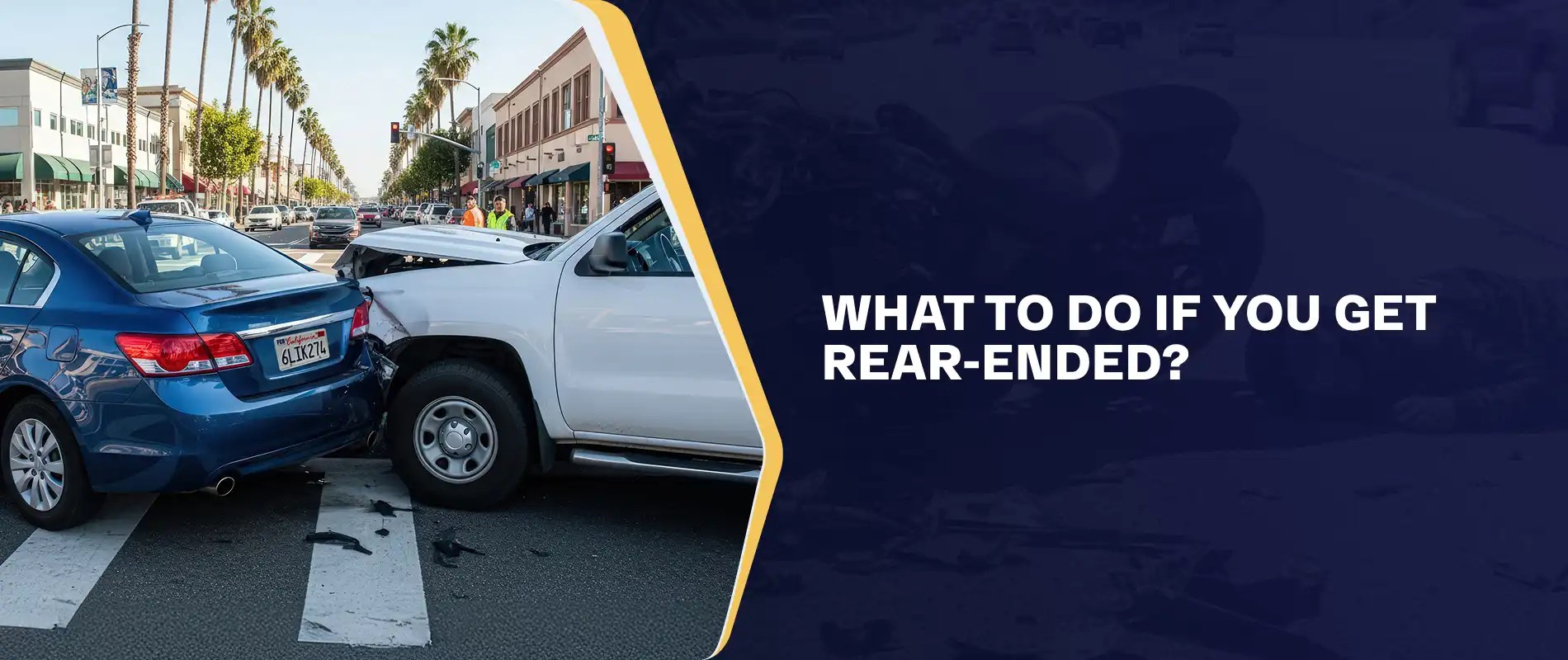If you get rear-ended, staying composed and knowing the appropriate steps to take can significantly impact your safety and future claims. Rear-end collisions are among the most frequent vehicle accidents, resulting in serious injuries and legal complexities. This guide provides a comprehensive overview of what to do immediately after the incident and how to navigate the aftermath, focusing on key actions that can safeguard your health, financial well-being, and legal standing.
Immediate Actions After a Rear-End Collision
Ensure Your Safety
- If possible, move your vehicle to a safe location off the road. Turn on your hazard lights to signal to other drivers that you’re in distress.
- Check yourself and any passengers for injuries. If anyone is hurt, call 911 for medical assistance.
Contact Authorities
- Regardless of the crash’s severity, always call the police. A police report can be crucial for insurance claims and establishing liability.
- When speaking to the responding officers, stick to the facts without admitting fault; remain calm to facilitate an accurate report.
Seek Medical Attention
- Regardless of how you feel, visit a medical professional as soon as possible. Injuries like whiplash or concussions may not manifest immediately but can lead to complications later.
- Keep all medical records, bills, and reports, as this documentation is vital for any potential claims.
- Document the Scene
- Take detailed photos and videos of the accident scene. Capture vehicle damages, license plates, road conditions, and any visible injuries.
- Collect contact and insurance information from the other driver, as well as any witnesses.
Follow-Up Steps After Leaving the Scene
Notify Your Insurance Company
- Inform your insurance provider about the incident promptly. This keeps your policy intact and avoids complications regarding coverage.
Inspect Your Vehicle
- Have a professional inspect your car for both visible and hidden damage, as some issues may not be immediately apparent.
Inform Your Employer
- If the accident affects your ability to work, inform your employer. Document any lost time, as it can support your claim for lost wages later.
- Consult a Car Accident Lawyer
- If you’re uncertain about filing claims or navigating legal issues, consult an experienced car accident attorney. They can help you evaluate your situation and the viability of your claim.
Importance of Documentation
The proper documentation can make or break your case. Here’s what to focus on:
- Photos and Videos: Capturing the scene can provide compelling evidence.
- Witness Statements: Collect names and contact information from those who witnessed the accident.
- Medical Records: Proper medical documentation establishes connections between the accident and any injuries sustained.
Common Causes of Rear-End Accidents
Understanding the triggers for rear-end collisions can clarify fault and strengthen your claim. Some prevalent causes include:
- Tailgating: Following too closely frequently leads to collisions when traffic unexpectedly slows.
- Distracted Driving: Engaging in distracting activities can impair a driver’s reaction time.
- Sudden Stops: Abrupt braking without signaling leaves insufficient time for the following vehicle to respond.
- Poor Weather Conditions: Rain, fog, or icy roads can significantly reduce traction and visibility, contributing to accidents.
Legal Framework and Requirements
In many rear-end accidents, liability typically falls on the driver that strikes the vehicle in front. Nevertheless, proving negligence requires demonstrating the following four key elements:
- Duty of Care: All drivers have a responsibility to operate their vehicles safely and follow traffic regulations.
- Breach of Duty: You need to prove that the other driver deviated from this standard by unsafe driving practices.
- Causation: The unsafe behavior must be shown to have directly led to the collision.
- Damages: This involves documenting the injuries and damages incurred as a result of the accident, including medical bills, lost income, and property damage.
Working with Insurance Companies
Once you’ve taken the initial steps, working with insurance companies is crucial. It’s essential to:
- Report the accident promptly.
- Avoid discussing details until you consult with a lawyer, as they can guide you on what information to disclose.
- Resist pressure to accept quick settlements before fully understanding your medical needs and the extent of damage.
Potential Outcomes and Compensatory Damages
Settlement amounts vary widely based on numerous factors, including injury severity, vehicle damage, and insurance policy caps. Compensation can cover:
- Medical Expenses: Costs related to hospitalization, treatment, and ongoing care.
- Lost Wages: Compensation for your inability to work due to injuries.
- Property Damage: The expenses required to repair or replace your vehicle.
- Non-Economic Damages: Pain and suffering, emotional trauma, and loss of life enjoyment.
FAQs on Rear-End Collisions
How Long Do I Have to File a Claim?
In California, personal injury claims typically have a two-year statute of limitations, while property damage claims generally have three years. It’s essential to initiate the process promptly to preserve your rights.
What to Do if My Claim Is Denied?
If denied, read the denial letter carefully to understand the reason. You can appeal the decision or consider legal action if warranted.
Is the Rear Driver Always at Fault?
Not always. In some situations, the front driver may bear some liability, such as erratic lane changes or malfunctioning brake lights.
Should I Go to Work After Being Rear-Ended?
It’s advisable to take time off to recuperate and monitor for any developing symptoms. Consult with a doctor before returning to work.
Conclusion
Navigating the aftermath of a rear-end collision can be overwhelming, but knowing the right steps to take can significantly ease the process. By acting quickly and documenting all relevant details, you can protect both your health and legal rights. If you’re facing challenges or uncertainties following an incident, consider consulting a car accident attorney to guide you through your options and help maximize your compensation. Always prioritize safety and recovery; your well-being is the most important aspect to consider after such an event.



:max_bytes(150000):strip_icc()/CashSocial-cc18101944f840bea0c6507f9b898899.jpg?w=150&resize=150,150&ssl=1)



